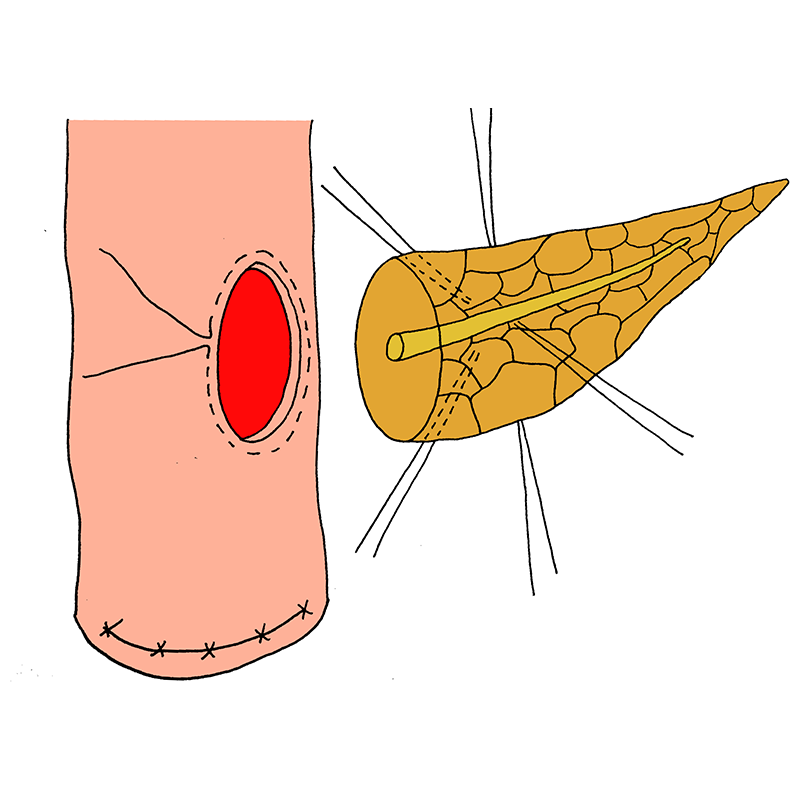A full-thickness incision is made in the jejunal side wall with a size similar to the diameter of the pancreas. A purse-string suture is applied in the seromuscular layer around the new-formed opening in the jejunum. Four to five stay sutures are placed in the pancreatic capsule around the pancreatic remnant.
One-layered invagination end-to-side pancreatojejunostomy without stitches in the pancreatic stump
- A full-thickness incision is made in the jejunal side wall with a size similar to the diameter of the pancreas.
- A purse-string suture is applied in the seromuscular layer around the new-formed opening in the jejunum.
- Four to five stay sutures are placed in the pancreatic capsule around the pancreatic remnant.
- The pancreas is invaginated into the jejunum via the jejunal side incision using the preplaced stay sutures.
- The stay sutures are fixed onto the jejunal seromuscular wall around the incision; herewith the depth of invagination of the pancreatic stump is secured.
- The purse-string suture is tied gently; care is taken to avoid occlusion of the main pancreatic duct.
- With this invagination technique, the pancreatic stump is inserted into the jejunum without placing any sutures on the pancreatic cut surface.
- Hashimoto D, Hirota M, Chikamoto A, Beppu T, Baba H. Short-term outcome of new end-to-side inserting pancreatico-jejunostomy without stiches on the pancreatic cut end. Hepatogastroenterology. 2014;61:489-492.
- Hashimoto D, Hirota M, Yagi Y, Baba H. End-to-side pancreaticojejunostomy without stitches in the pancreatic stump. Surg Today. 2013;43:821-824.






